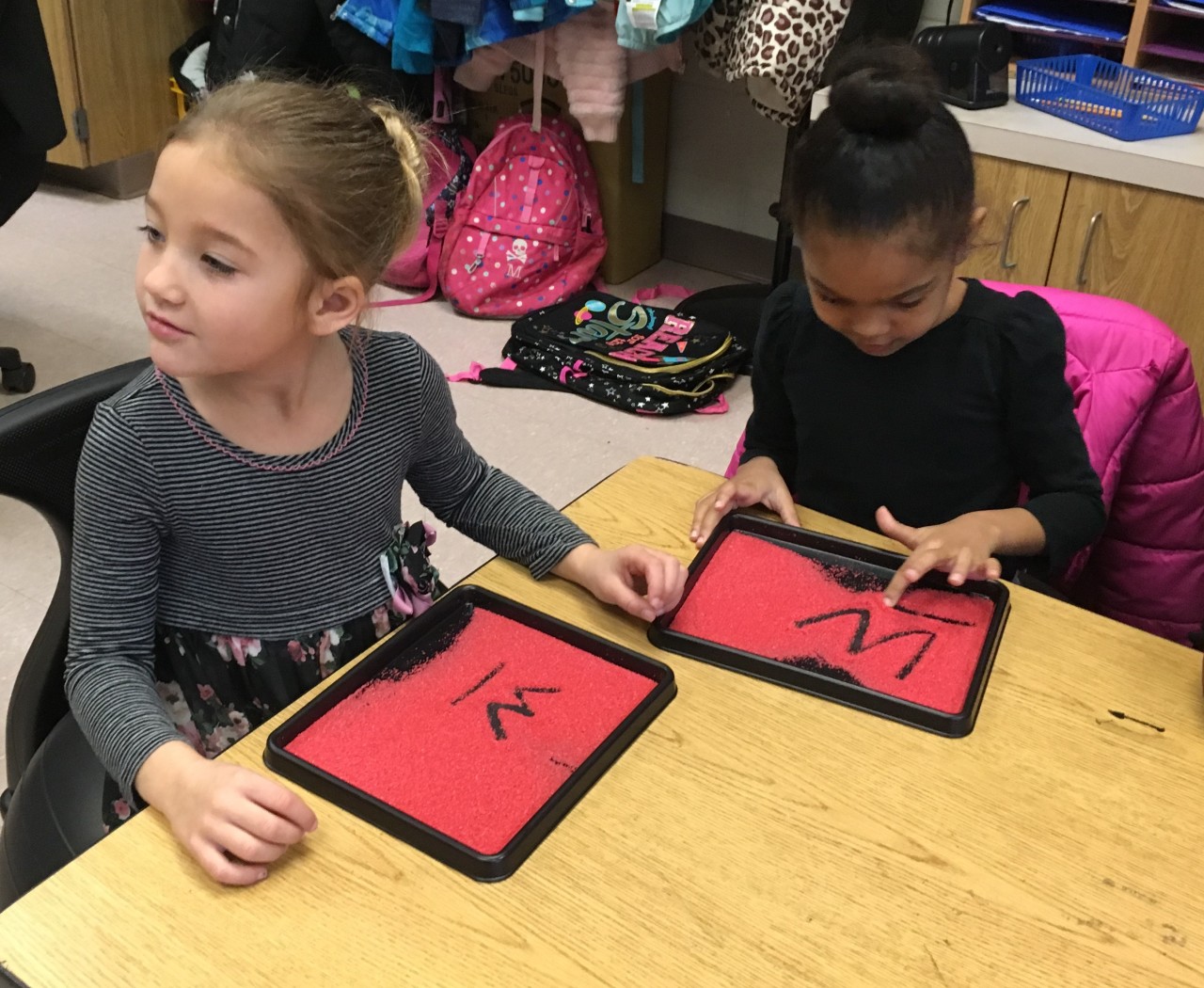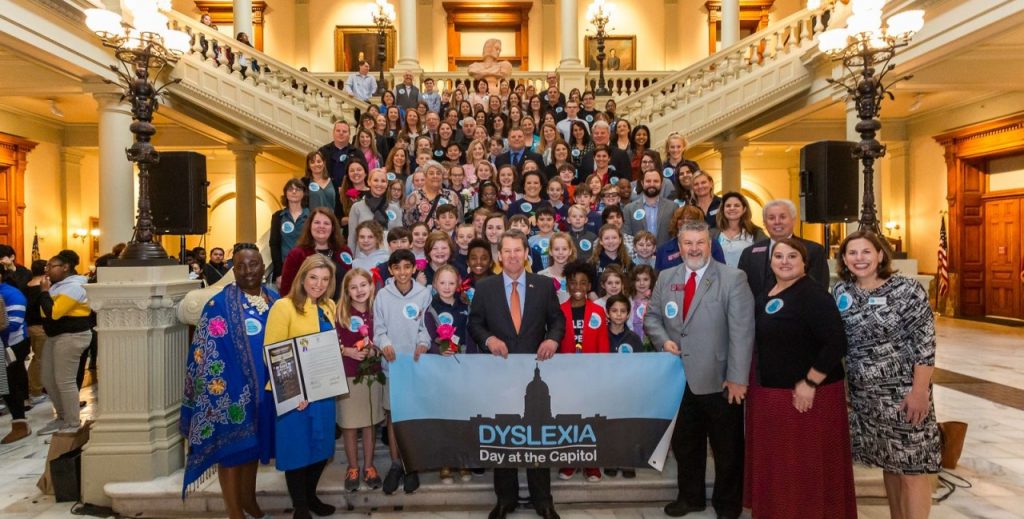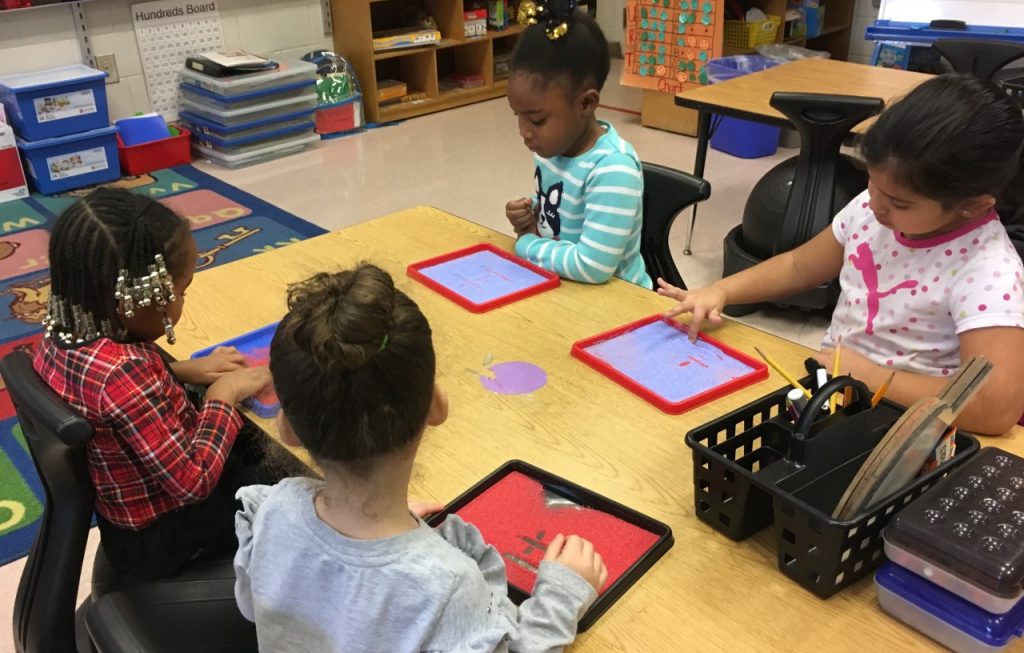Georgia Senate Passes Bill To Identify And Help Dyslexic Students

Kindergarten students at Atlanta’s Benteen Elementary School are using a phonics program based on a teaching method called Orton-Gillingham. It’s often used to teach dyslexic students how to read. (None of these students has a dyslexia diagnosis.) Credit: Martha Dalton
National data shows dyslexia affects between 10 and 20 percent of the U.S. population. A federal law, called the Individuals with Disabilities in Education Act (IDEA), says dyslexic students are entitled to special education services. However, the law doesn’t specify what those services should be.
As a result, some states have adopted their own laws to address the learning disability. Georgia may soon be among them. The state Senate Wednesday unanimously passed Senate Bill 48, which would require schools to screen students in grades K-2 for traits of dyslexia. It would also offer training for teachers in methods used to teach dyslexic children.

Myth vs. Reality
The first known case of dyslexia was recorded more than 100 years ago, but Sally Shaywitz said she meets plenty of people who still misunderstand it.
“’Oh yeah, I know about dyslexia,’” Shaywitz said, as she described recent conversations to a Georgia Senate committee. “’It’s when they reverse letters.’ Well, not exactly.’”
Shaywitz, a physician and author, is the director of the Yale Center for Dyslexia and Creativity. She is a leading researcher who began the first longitudinal study of dyslexia. She said contrary to popular belief, dyslexia isn’t a disorder that causes people to transpose letters.
“The term dyslexia means an unexpected difficulty in reading for an individual who has the intelligence to be a much better reader, most commonly caused by a difficulty in the phonologic processing,” Shaywitz said in a phone interview. “That means the appreciation of spoken sounds of spoken language, which affects the ability of an individual to speak, to read, and to spell.”
Shaywitz said dyslexia has to do with how the brain works. Kids with the disorder often have trouble recognizing sounds in words. Take the word ‘cat.’ A student with dyslexia might struggle to identify the three letters in that word and the sound each letter makes.
However, dyslexic students can learn to read. Usually, they’re taught using structured literacy programs, which introduce them to letters and sounds in several different ways. Structured literacy has been so effective, that some local districts, like Atlanta Public Schools and Marietta City Schools, are offering training in those methods to their regular classroom teachers.
“It Really Does Stick”
Kelsey McCorkle is a Kindergarten teacher at Atlanta’s Benteen Elementary School. She took training offered by Atlanta Public Schools over the summer based on a structured literacy program called Orton-Gillingham. None of McCorkle’s group of 10 students have been diagnosed with dyslexia. However, statistically, 1-2 of them would have it.
McCorkle starts by holding up big cards with lowercase letters on them. Her children repeat the letter and say which sound it makes.
Next, McCorkle’s kids sit at tables, where they’re given small trays filled with sand. She gives them a sound. They write the letter in the sand with their fingers. This is what’s known as a multi-sensory approach. It’s effective for kids with dyslexia because it lets them use different senses to take in the information.

McCorkle’s children move on to blending consonants (digraphs) and eventually writing words. At the end of the lesson, they write a full sentence. This seems like a lot of work for Kindergarten. McCorkle admits the expectations are high. Benteen is a Title I school, meaning most of her students come from low-income homes.
“This is the first time most of my children are introduced to print, and some of them introduced to how you hold a book, introduced to how you form letters,” she said.
McCorkle has taught Kindergarten for seven years. Since she’s started teaching this way, she says she’s noticed a difference in what her kids can do.
“That constant repetition, the use of their different modalities, and all of the phonics-based and sight word-based instruction that I give, it really does stick,” she said.
Lessons from Mississippi
Parents of dyslexic students in Georgia would like to see methods like this used more frequently in schools. Some states are already doing that. In fact, Mississippi has been doing it for decades. Lawmakers passed the state’s first piece of dyslexia legislation in 1996.
“We call it the perfect storm in Mississippi because it’s that particular piece of legislation along with three other components of legislation we have that address dyslexia,” said Robin Lemonis, bureau director of the office of student intervention services for the Mississippi Department of Education.
The state has several resources in place, including scholarships for some students to attend private schools to receive dyslexia therapy. Mississippi also offers tuition help for teachers who want to get their master’s degree and become licensed dyslexia therapists.
Mississippi also requires students to be screened for traits of dyslexia in Kindergarten or first grade.
“If I look at a district and 80 percent of their kids are failing the screener, I know that’s a district I need to contact and offer some support and talk to them and say, ‘You know we offer [training].’” Lemonis said.
Lemonis said that doesn’t mean 80 percent of students would have dyslexia, but it does signal a problem with reading instruction. She sees the state’s support for students with dyslexia as part of an overall strategy to improve literacy. Since Mississippi has taken these steps, the state’s reading scores on the National Assessment of Educational Progress (NAEP) have improved significantly.
The bill that passed the Senate here in Georgia includes some of the same tools Mississippi uses, such as the screening requirement. Right now, there isn’t a screening process. So, it’s hard to know exactly how many Georgia students have the disability.
The bill would also provide training for teachers similar to what Kelsey McCorkle received.
Sally Shaywitz, of Yale, says schools need to be more understanding and accepting of dyslexia and the students affected by it.
“Children need to be in an environment, in a climate, that values them, that accepts the dyslexia diagnosis, that understands dyslexia, and where the needs of dyslexic students are front and center,” she said.
A note of disclosure: The Atlanta Board of Education holds WABE’s broadcast license.








